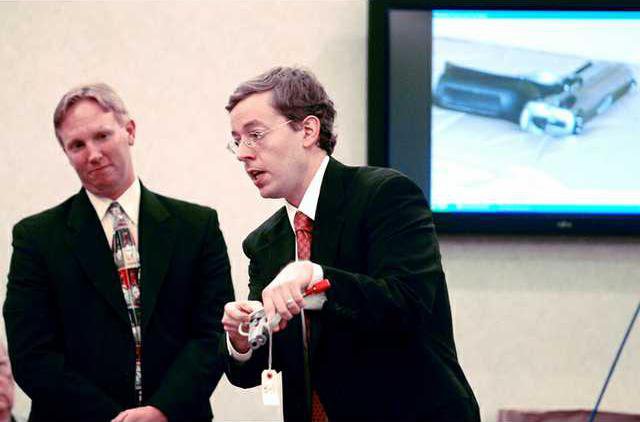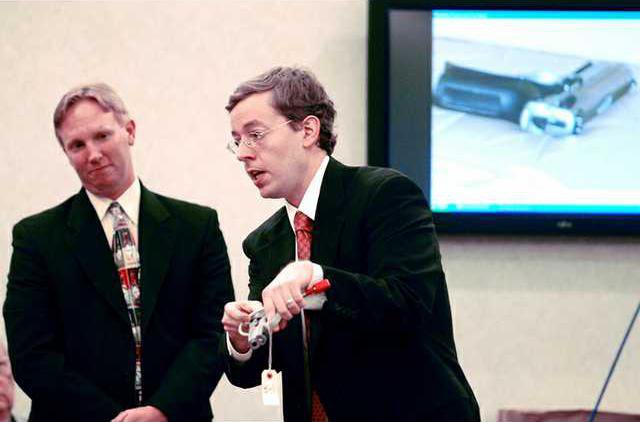Two experts differed in court Tuesday on how they interpreted tiny specks of blood found near the body of a woman who prosecutors say was murdered.
On the fifth day of testimony in the murder trial of Solomon "Troy" Hester, his attorneys began presenting their case that the shooting death of 30-year-old Allison Brownell was suicide, not homicide.
Assistant Circuit Defender Brett Willis called a retired Georgia Bureau of Investigation firearms supervisor to testify about what he saw in crime scene photos taken of Brownell, who died on Oct. 1, 2007, inside the Belvedere Drive home she shared with Hester and her two daughters.
Brownell was found dead by first responders, lying on her right side on a couch, her right hand clutching a cigarette lighter and a .40 caliber handgun under her left hand.
Hester called 911 to report the shooting as a suicide, but was later charged with murder.
As a Hall County Superior Court jury listened Tuesday, independent consultant Kelly Fite’s testimony at times ran counter to the theory presented by the state’s final witness.
Fite testified that based on the trajectory of the bullet fired through Brownell’s head and into a sofa cushion, her head was between five and 11 inches off the cushion when she was shot.
Former GBI firearms examiner Chris Robinson testified earlier Tuesday that he believed "her head was right down on the cushion" when the shot was fired.
Hester reportedly told investigators Brownell was sitting up when he saw her put the gun to her head and fire.
Robinson, the state’s witness, said if Brownell was sitting up, there would be blood on the back sofa cushion. He said the blood spatter "halo," small dots of blood surrounding Brownell’s head, came from the wound caused when the bullet entered her head.
Fite, the defense expert, said the high-velocity blood spatter was from the exit wound, not the entrance.
Under cross-examination, Fite acknowledged he didn’t think Brownell was sitting "straight up" when she was shot.
"We know her head was pretty much parallel to the couch?" Assistant District Attorney Kelley Robertson asked.
"Basically, yes," Fite said.
Both experts said it would have been awkward for Brownell to shoot herself based on the position the gun was in when she was shot. Authorities were able to determine the orientation of the gun from marks it left on the side of Brownell’s head.
Robertson, holding the gun to her head as she demonstrated the loose grip that the angle would create, asked Fite, "that’s not a great way to hold a gun, is it?"
"To me, it’s awkward," Fite responded.
Robinson, the last witness before the state rested its case, also demonstrated the grip, saying "my hand can’t stay on the grip. I can’t do it without hurting myself, either my wrist or my shoulders."
The defense is expected to call an out-of-state medical examiner to testify today that Brownell’s injuries could be consistent with a suicide.

